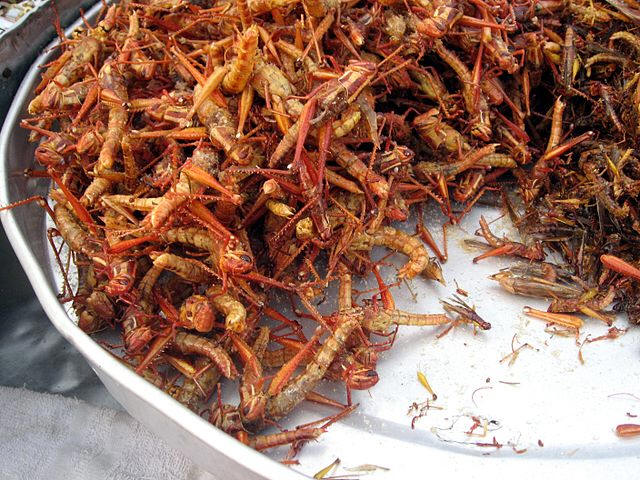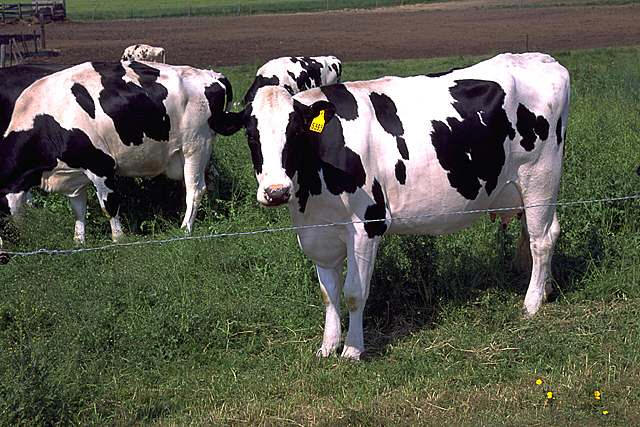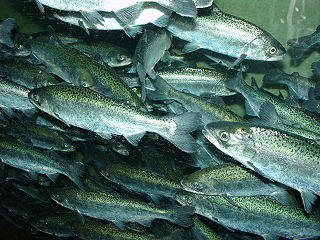Can We Eat It?

Utilizing grasshoppers or other insects as a food source is
arguably a more efficient and healthier alternative to modern
livestock. Currently, the global livestock sector emits over
eighteen percent of the worlds’ annual greenhouse gas emissions.
Additionally, rearing livestock consumes a staggering amount of
fresh water when compared to insect rearing. For example,
raising one-third pound of edible protein from grasshoppers
requires only the water in the leaves of the plants they eat,
whereas one-third pound of protein from cattle requires almost
900 gallons of water
(Walsh, 2008). When it comes to the efficiency of
conversion of ingested food to unit of body substance, or ECI,
insects are often several times more efficient than most
livestock. This increased growth efficiency is largely due to
the fact that insects are cold-blooded. Mammals like
cows, pigs,
and sheep expend much of their ingested energy on maintaining
their internal body temperature. Insects like grasshoppers,
however are able to maintain their body temperature by simply
basking in the sun. This means that more of their energy
translates to growth, which means more food for less.


Amazingly, insects like grasshoppers are not only a more efficient and
sustainable food source than regular livestock, but often more
nutritious too! At roughly 21g of protein per 100g serving, grasshoppers
rival the protein content of beef and fish. They also have twice the
amount of iron as beef and five times more than fish!
(Dunkel & Berenbaum, 2000)
For years grasshoppers have plagued the fields of farmers and demanded
the use of dangerous pesticides and poisons. However, if properly
utilized as a food source we could effectively eat our problems away.
Instead of wasting money on potential harmful pesticides we could
harvest the grasshoppers as an additional free food source. But, why
stop there. Cattle-rearing is an inefficient practice and growing
problem. Large herds of
cattle are commercially raised in close
proximity, which demands copious amounts of antibiotics to keep the herd
healthy. This irresponsible use of antibiotics has spurred the
development of antibiotic resistant bacteria that require even more
money to be dealt with. In contrast grasshoppers are organisms that have
evolved to live in large numbers in close proximity to each other or
swarms. By employing this evolutionary trait grasshoppers could safely
be reared in large numbers as a food source much more cheaply than
cattle.
